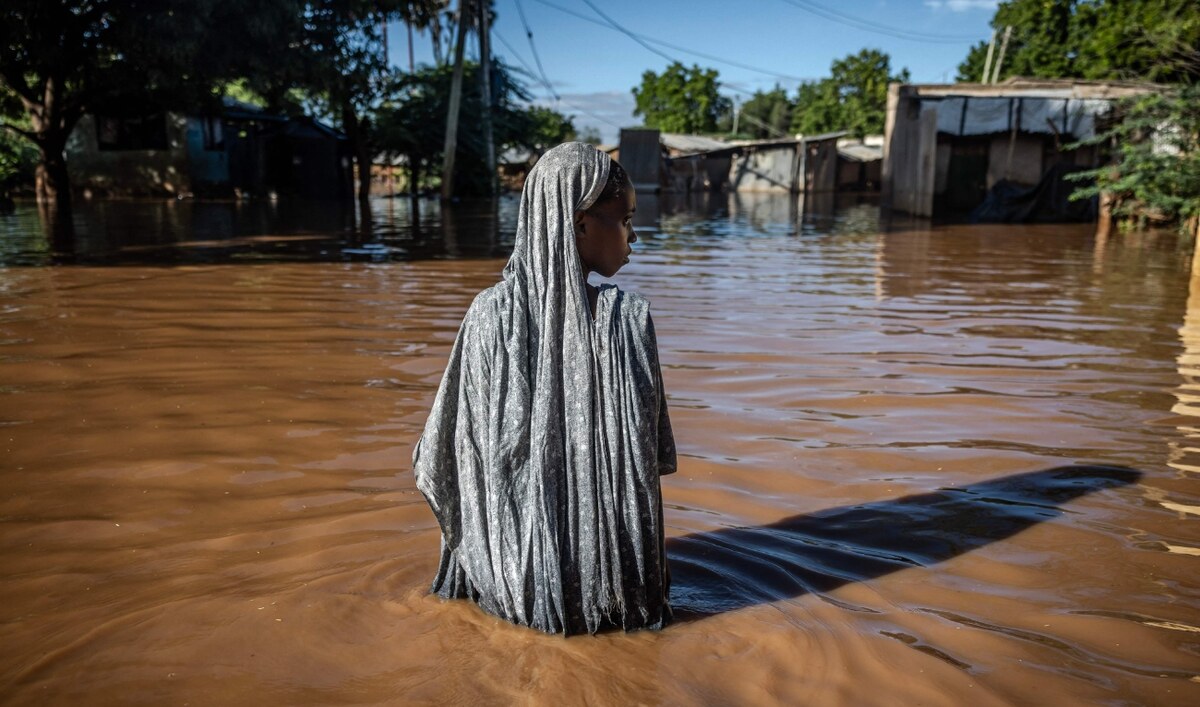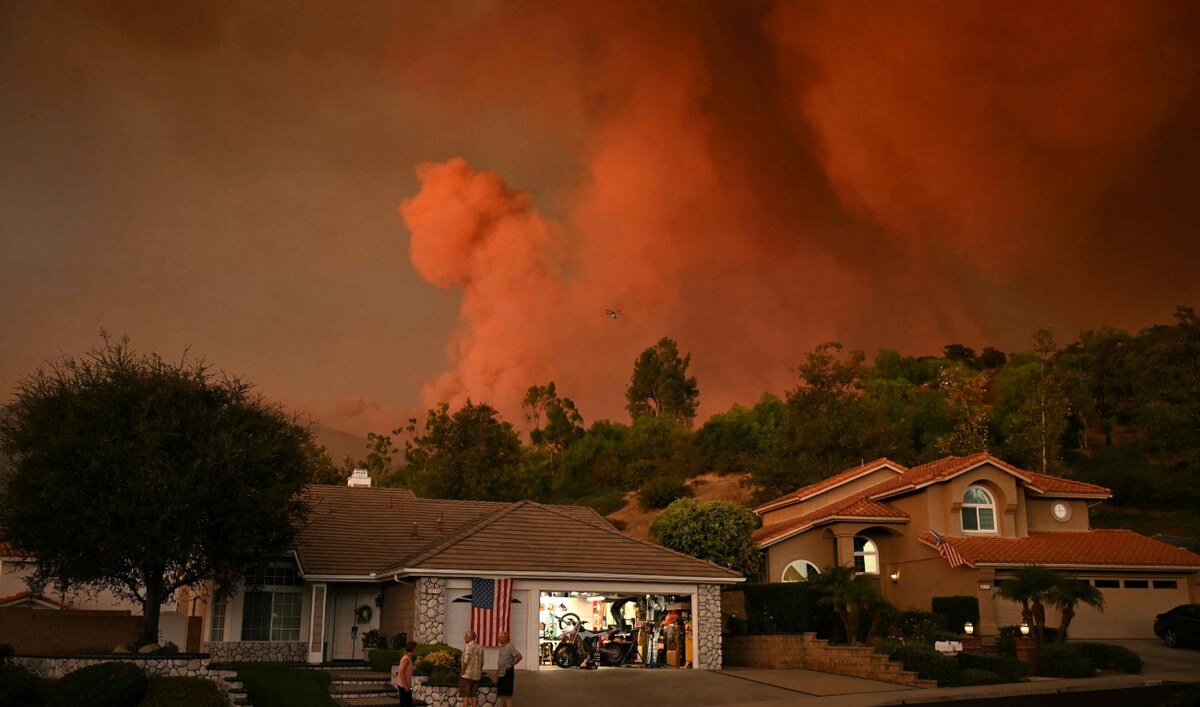MIAMI, US: Florida’s highways were jammed Friday with families fleeing their homes as Hurricane Irma honed in on the Sunshine State after reducing island resorts to rubble and killing at least 17 people across the Caribbean.
Bumper-to-bumper traffic snaked north out of the peninsula, with mattresses, gas cans, mattresses and kayaks strapped to car roofs, as residents heeded increasingly insistent warnings to get out and Florida’s governor said all of the state’s 20.6 million inhabitants should be prepared to evacuate.
“Hurricane Irma is of epic proportion, perhaps bigger than we have ever seen,” US President Donald Trump warned on Twitter. “Be safe and get out of its way, if possible.”
Roaring across the Caribbean, the monster storm laid waste to a series of tiny islands like Saint Barthelemy and Saint Martin, where 60 percent of homes were wrecked and scenes of looting have broken out, before slamming into the Virgin Islands and Puerto Rico.
“Houses are smashed, the airport is out of action, telephone and electricity poles are on the ground,” Olivier Toussaint, a resident of Saint-Barthelemy, told AFP. “Upside-down cars are in the cemeteries. Boats are sunk in the marina, shops are destroyed.”
Irma was downgraded overnight from a rare Category Five storm to a still-deadly Category Four, and continued to pack extremely dangerous winds of 150 miles per hour (240 kilometers per hour).
Forecasters warned of storm surges of up to 25 feet (almost eight meters) above normal tide levels, as the hurricane bears down for a direct hit on southern Florida, where the mass exodus is being complicated by gridlock and fuel shortages.
Normally bustling Miami Beach was deserted and storefronts were boarded up with plywood, some bearing graffiti reading “Say no to Irma” or “You don’t scare us Irma.”
“Nobody can be prepared for a storm surge. They can destroy everything,” said David Wallack, a 67-year-old salsa club owner doing his best to secure his property on the city’s Ocean Drive.
“We just can pray for the best. You put what you can in a suitcase and hope.”
Police cars crawled the coastal roads of West Palm Beach, blaring out “Attention, attention, this is a mandatory evacuation zone, please evacuate.”
'It will be truly devastating'
“The entire southeastern United States better wake up and pay attention,” warned US federal emergency chief Brock Long. “It will be truly devastating.”
In neighboring Georgia, Governor Nathan Deal ordered a mandatory evacuation of the city of Savannah, which has a population of around 150,000 people, and other coastal areas.
According to the latest trajectory from the Miami-based National Hurricane Center, Irma is expected to strike the Florida Keys late on Saturday before moving inland.
At 11 am (1500 GMT) Friday, the hurricane was over the northern edge of Cuba and the central Bahamas and heading northwest at around 14 miles per hour (22 kph).
Even as Irma barrelled toward Florida, meteorologists were closely monitoring two other hurricanes: Jose — a Category Four storm following Irma’s path in the Atlantic — and Katia, set to reach Mexico on Friday.
“The storm is powerful and deadly,” Florida Governor Rick Scott said.
“Today is the day to do the right thing for your family and get inland for safety,” he said. “Do not ignore evacuation orders. All Floridians should be prepared to evacuate soon.”
“Remember, we can rebuild your home, we can’t rebuild your life,” he said.
In the Caribbean, violent winds ripped roofs and facades off buildings, hurling lumps of concrete, cars and even shipping containers aside.
At least two people were killed in Puerto Rico, and more than half of its three million residents were without power after rivers broke their banks in the center and north of the island.
Another four people were killed on the US Virgin Islands, with a number of badly injured people airlifted to Puerto Rico.
Islands suffer massive destruction
One person died in tiny Barbuda where 30 percent of properties were demolished and 300 people had been evacuated to Antigua.
France said at least nine had been killed across its Caribbean territories with seven more missing. There were 112 people injured, two seriously.
Six out of 10 homes were left uninhabitable, with insurers in Paris estimating their overall costs would likely be “much higher” than 200 million euros ($240 million).
On the Dutch side of St. Martin, one person died, officials said. Dutch King Willem-Alexander will head to the island of Curacao to the south on Sunday for a briefing on the aid operation, and may travel on to St. Martin, officials said.
Residents in the British Virgin Islands spoke of scenes of “devastation.”
“Our downstairs doors suddenly blew out, which was terrifying,” Emily Killhoury told the BBC from her home in Tortola.
“We eventually emerged at about 7 p.m. to see total devastation.”
Britain’s defense ministry said it was sending two military transport planes to the region carrying personnel, supplies and recovery equipment.
European nations quickly mobilized to help their citizens in the Caribbean, with France and the Netherlands ordering hundreds of extra police to St. Martin to tackle an outbreak of looting amid major shortages of food, water and petrol.
Speaking to Algemeen Dagblad, one witness reported seeing “people with guns and machetes” in the street.
French Overseas Territories Minister Annick Girardin said 400 police officers would be deployed after seeing “pillaging right in front of us” in St. Martin where most of the 80,000 inhabitants have lost their homes.
In the Dominican Republic, torrential rain and powerful winds left 17 districts cut off, with nearly 20,000 people evacuated and more than 100 houses destroyed.
And in Cuba, some 10,000 foreign tourists were evacuated from beach resorts as authorities hiked the disaster alert level to maximum.





























